Propagating Houseplants 101: Multiply Your Green Babies Like a Pro!
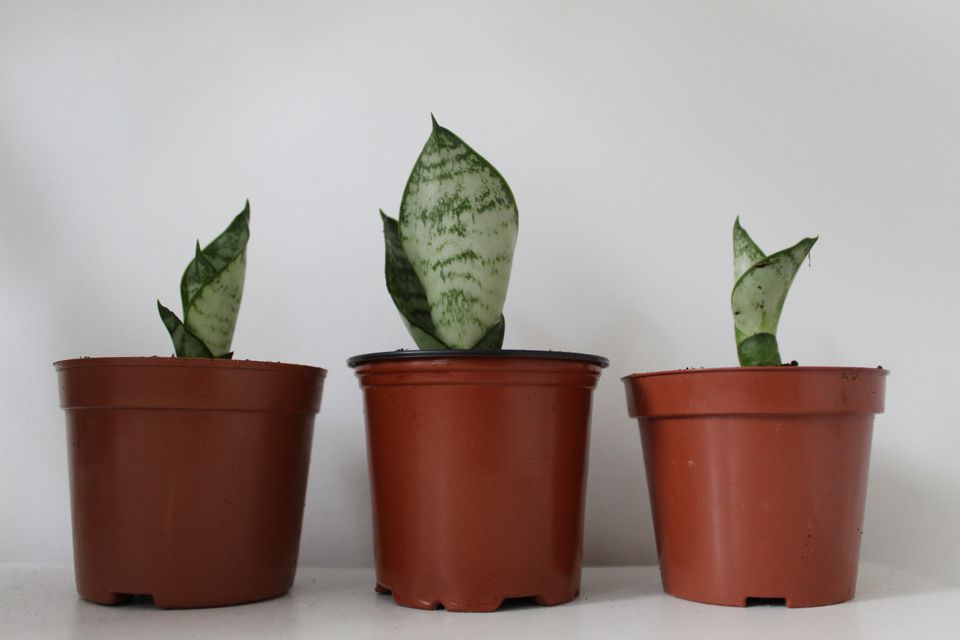
One plant is just NEVER enough! If you're looking to multiply your indoor jungle without breaking the bank, you're in the right place. Propagating houseplants is not only a cost-effective way to expand your plant family, but it's also an incredibly rewarding and enjoyable hobby. In this easy beginners guide, we'll explore different propagation methods, the tools and supplies you'll need, the best time to propagate, and how to troubleshoot common problems. Plus, we'll reveal 10 popular houseplants to propagate ranked by their level of difficulty. So, strap on your gardening gloves and let's make some plant babies!
Why should you propagate your plants?
If you are new to houseplants, propagating your own can be a cost-effective way to start or expand your indoor garden. The propagation techniques discussed below are perfect for beginners and can help you quickly grow your plant collection. Perhaps you are someone who enjoys hands-on, do-it-yourself projects, or you’re conscious about sustainability. Propagation allows you to grow new plants without the need for constant purchases or contributing to carbon-heavy processes like unsustainable mass farming and shipping, making it an eco-friendly and budget-conscious choice. It’s also a great way to really connect with and learn about your plants as a dynamic organism.
Propagation Methods
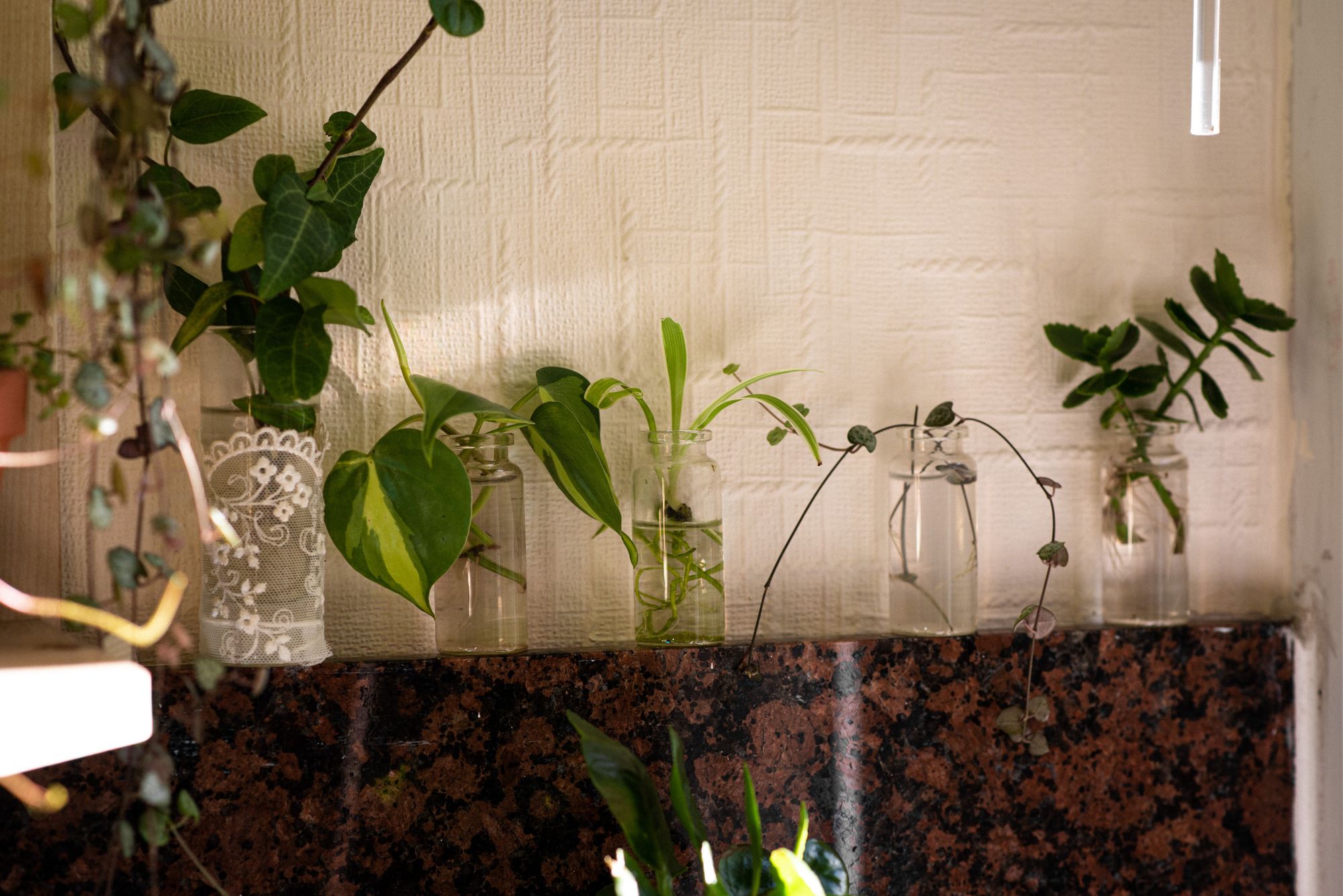
1. Cuttings:
Cuttings are the most common and straightforward method of plant propagation. They involve removing a piece of a healthy parent plant and encouraging it to develop roots and grow into a new plant. There are two easy types of cuttings: stem and leaf.
Stem Cuttings: This technique is perfect for vining plants, such as pothos and philodendrons. To propagate via stem cuttings, follow these steps:
- Choose a healthy stem with at least one leaf node.
- Cut the stem just below the node using clean, sharp scissors or a knife.
- Remove any leaves near the cut end, leaving only a few at the top.
- Dip the cut end into a rooting hormone (optional but recommended).
- Place the cutting in water or well-draining soil, ensuring the node is submerged.
- Keep the cutting in a bright, indirect light and watch for root growth!
Leaf Cuttings: Leaf cuttings are ideal for succulents and plants with fleshy leaves, such as jade plants and African violets. Here's how to propagate using leaf cuttings:
- Gently remove a healthy leaf from the parent plant by twisting or cutting at the base.
- Allow the leaf to callus over for a day or two (especially important for succulents).
- Dip the cut end into rooting hormone (optional).
- Place the leaf into moist, well-draining soil or lay it on top of the soil.
- Keep the cutting in bright, indirect light and maintain consistent moisture.
- Wait patiently for roots and new growth to emerge!
2. Division:
Division involves separating a plant into smaller sections, each with its own root system. This method is suitable for plants that form clumps or multiple stems, such as peace lilies and spider plants. To propagate by division:
- Gently remove the parent plant from its pot.
- Carefully tease apart the root system, creating smaller divisions with roots and foliage.
- Repot each division into a pot with fresh, well-draining soil.
- Water the new plants and place them in bright, indirect light.
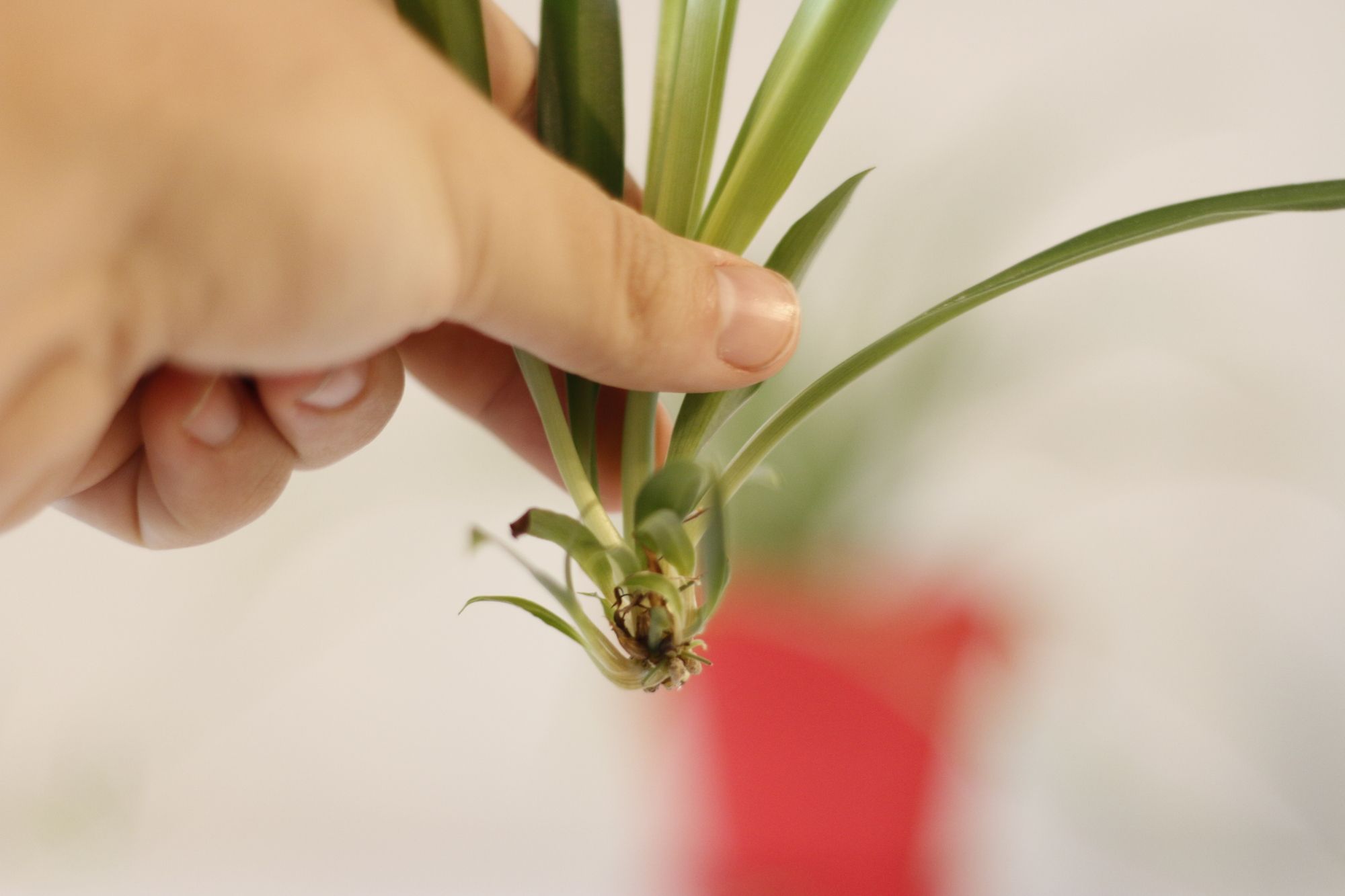
3. Layering:
Layering is a method where a stem or branch remains attached to the parent plant while it forms roots and establishes a new plant. This technique is suitable for vining plants or those with flexible stems, such as ivy and monstera. There are two main types of layering: air layering and ground layering.
Air Layering: Air layering is a technique where roots are encouraged to form on a stem while it's still attached to the parent plant. To propagate by air layering:
- Choose a healthy stem with a leaf node.
- Make a small, upward-angled cut about halfway through the stem, just below the node.
- Insert a toothpick or small stick into the cut to keep it open.
- Wrap the cut area with moist sphagnum moss.
- Cover the moss with plastic wrap or a plastic bag, securing it with ties or tape.
- Keep the plant in bright, indirect light and monitor the moss for consistent moisture.
- Once roots have formed, cut the stem below the rooted area and plant it in well-draining soil.
Ground Layering: Ground layering involves encouraging roots to form on a stem by burying a section of it in soil. To propagate by ground layering:
- Choose a healthy, flexible stem that can easily reach the soil.
- Remove any leaves or side shoots from the stem section you plan to bury.
- Make a small, upward-angled cut about halfway through the stem, just below a node.
- Bend the stem down and bury the cut section in moist, well-draining soil, leaving the tip exposed.
- Secure the buried stem with a U-shaped pin or a heavy object to keep it in place.
- Keep the plant in bright, indirect light and maintain consistent moisture.
- Once roots have formed, cut the stem from the parent plant and let the new plant grow independently.
Tools and Supplies
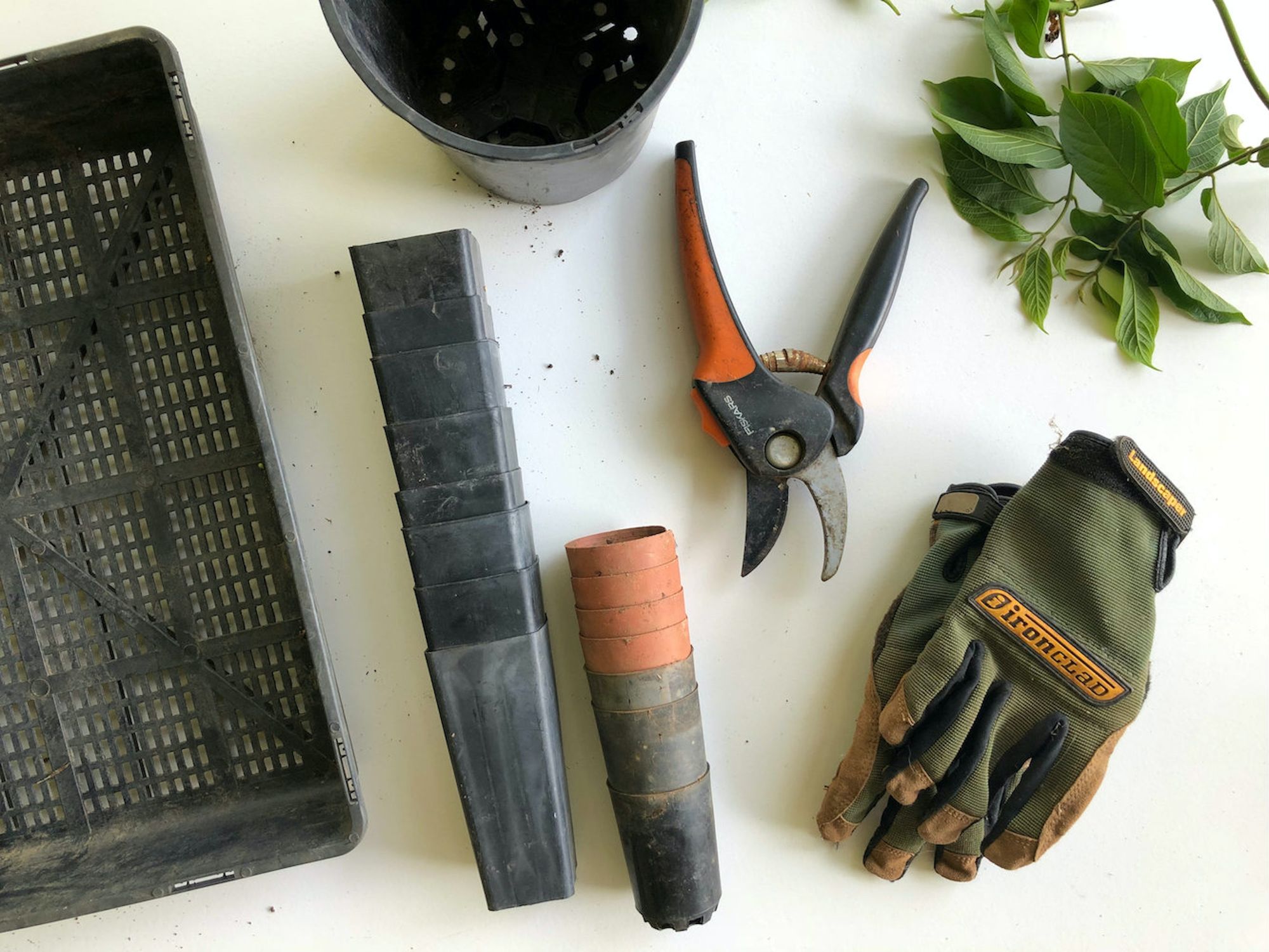
To propagate your houseplants like a pro, you'll need some basic tools and supplies:
- Clean, sharp scissors or a knife
- Rooting hormone (optional, but can improve success rates)
- Moist, well-draining soil or a soilless mix (e.g., perlite, vermiculite)
- Sphagnum moss (for air layering)
- Small pots or containers
- Plastic wrap or plastic bags (for air layering)
- Ties or tape (to secure plastic during air layering)
- Toothpicks or small sticks (for air layering and keeping cuts open)
- A spray bottle (for maintaining moisture during propagation)
Timing
The best time to propagate houseplants is during their active growth period, which is typically spring and summer. During this time, plants are more likely to produce new growth and recover from the stress of propagation. However, some hardy plants, like pothos and snake plants, can be propagated year-round with success.
Troubleshooting Common Problems
Here are some common issues you might face while attempting to propagate your houseplants, along with some tips to help solve them:
Root Rot:
Root rot occurs when the cutting or division is left in overly wet conditions, causing the roots to decay. To prevent root rot, ensure your soil is well-draining and avoid overwatering.
Slow or No Root Growth:
If your cuttings aren't producing roots, try the following:
- Use a rooting hormone to encourage root development.
- Ensure the cutting is receiving bright, indirect light.
- Maintain consistent moisture, but avoid soggy conditions.
Yellowing or Dropping Leaves
This issue may arise from inadequate light, overwatering, or a lack of nutrients. Adjust your plant's environment accordingly and consider adding a balanced, water-soluble fertilizer to promote healthy growth.
10 Popular Houseplants to Propagate - Ranked From Easy to Challenging
1. Pothos (Epipremnum aureum) - Easy
With its fast-growing, vining habit, pothos is perfect for beginners. Propagate using stem cuttings in water or soil.
2. Snake Plant (Sansevieria) - Easy
Known for its hardiness, snake plants can be propagated using leaf cuttings or division. Just be patient, as root growth may take a few weeks.
3. Spider Plant (Chlorophytum comosum) - Easy
Spider plants produce baby plantlets that can be easily removed and propagated in water or soil. Division is also an option.
4. Philodendron - Easy
Like pothos, philodendrons are vining plants that can be propagated using stem cuttings in water or soil.
5. ZZ Plant (Zamioculcas zamiifolia) - Moderate
Propagation via leaf cuttings or division is possible, but patience is key, as root growth can take several months.
6. Rubber Plant (Ficus elastica) - Moderate
Rubber plants can be propagated using stem cuttings, air layering, or even leaf cuttings, although the latter may take longer to establish.
7. Monstera deliciosa - Moderate
With its iconic split leaves, monstera can be propagated via stem cuttings or air layering. Ensure you include a node for successful propagation.
8. African Violet (Saintpaulia) - Moderate
Propagate African violets using leaf cuttings placed in soil or water. Patience is required, as new plantlets may take a few months to emerge.
9. Fiddle-Leaf Fig (Ficus lyrata) - Challenging
Fiddle-leaf figs can be propagated using stem cuttings or air layering, but success rates may be lower due to their finicky nature.
10. Calathea - Challenging
Calatheas can be propagated by division, but their sensitive nature and preference for high humidity can make the process challenging.
With this easy comprehensive guide to propagating houseplants, you'll be well on your way to expanding your indoor jungle and becoming a true plant propagation pro. Remember, practice makes perfect, and each plant may have its quirks. So, don't be afraid to experiment and learn from your experiences. Soon enough, you'll be sharing your plant babies with friends, family, and fellow plant lovers, spreading the joy and beauty of houseplants far and wide!
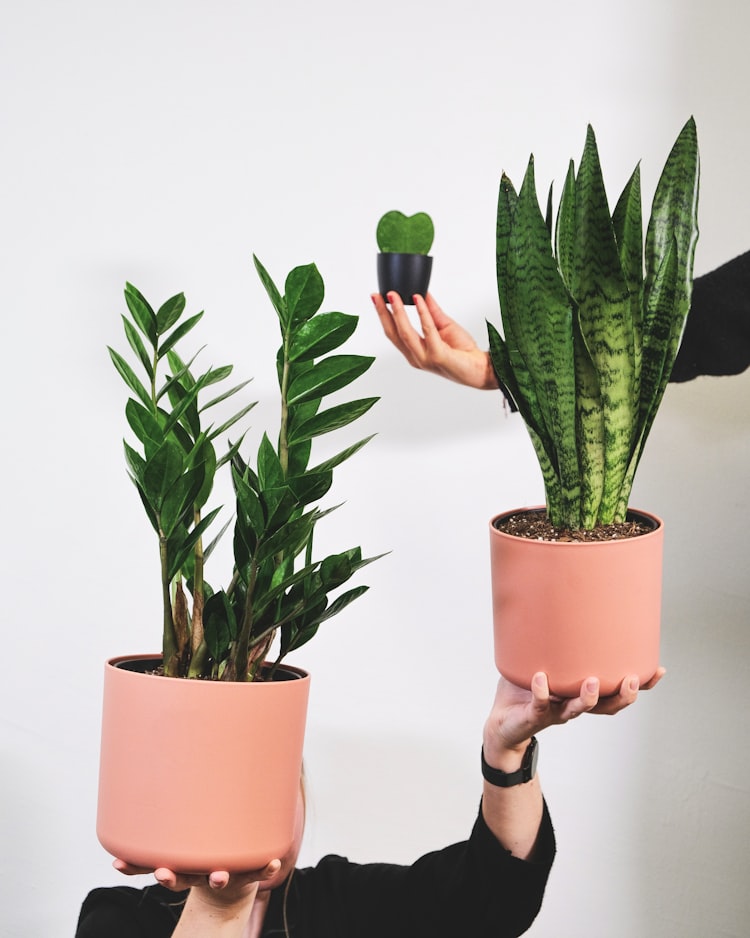
Comments ()